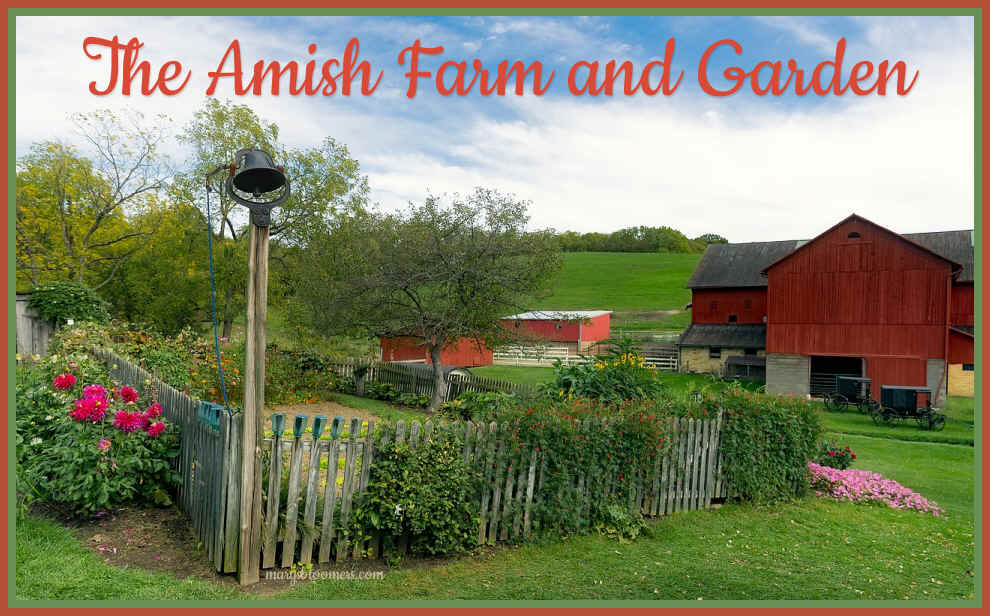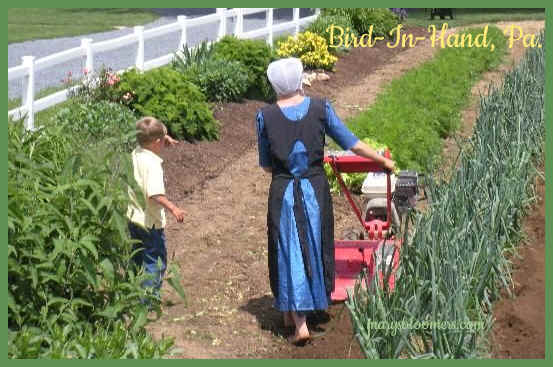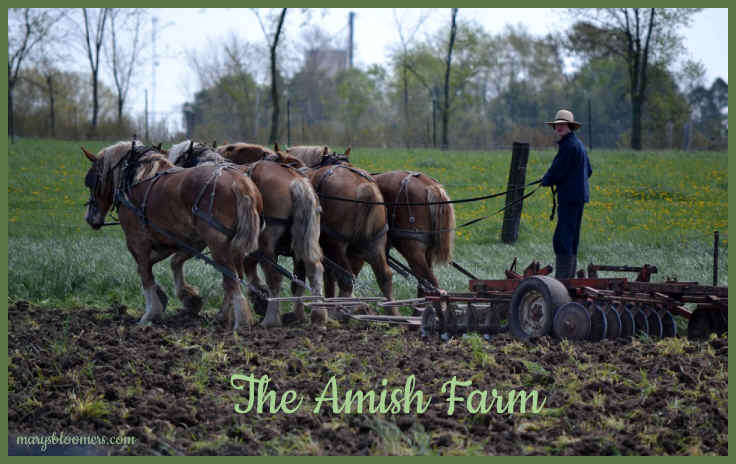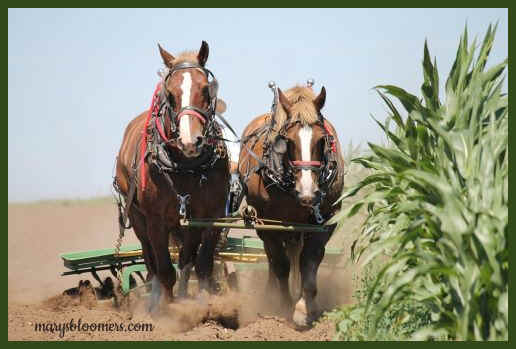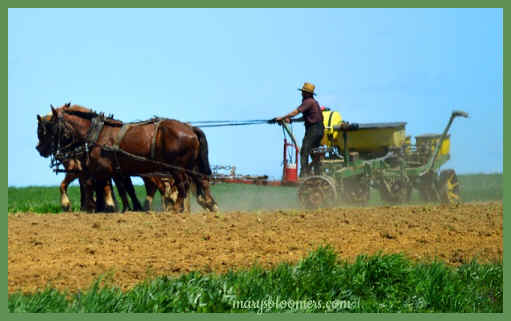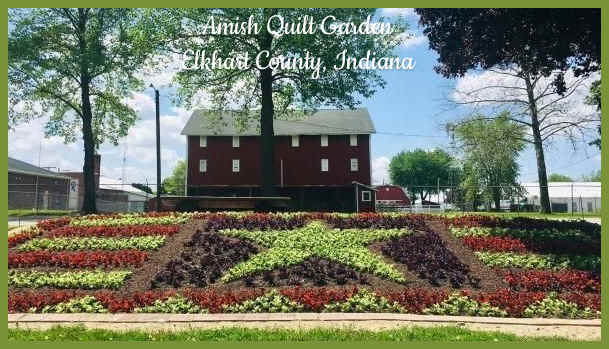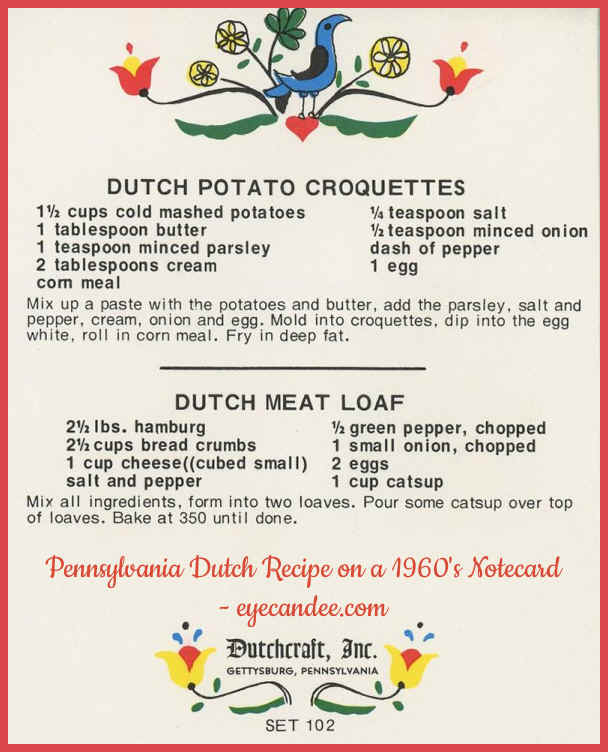|
|
||||||||
The Amish, or Pennsylvania Germans, are known as the Pennsylvania Dutch. The Amish folk had a farm kitchen garden containing vegetables, herbs for cooking, flowers, and medicinal plants. A wooden fence or a stone wall surrounds most Amish farm gardens. In the 19th century, whitewashing the fence was a job performed every spring, and done mostly by the children. Gardens and farms in Lancaster County, Pa., and the surrounding areas are some of the most beautiful in the country. I used to live in Northeast Pa., and it was a lovely 2-hour road scenic trip to Amish Country, parts of which are in Lancaster. We used to attend the annual Kutztown Fair, where I picked up lots of Amish treats, and viewed the spectacular quilts and squeaky clean, well-cared-for livestock. The farms we passed were beautiful and meticulously kept. You could see that while riding on the Interstate. Riding along the rural roads throughout Amish country, you got to view the very pretty kitchen gardens, which were in front of most farms. And if you were lucky, it was washday, and quilts hung outside on the clotheslines. After a while, cars on the road were replaced by the familiar Amish family horse and buggy. That's where another world begins. In a diary, which is now in the
collection of the Mennonite Heritage Center, John Gehman, wrote of about
the Amish gardens:
There was usually just one opening through the fence into the garden – The gate. And the gate was usually just a little wider than the wheelbarrow used on the farm. This was the largest object that had to be brought into the garden, and this determined the minimum width of the gate. The purpose of the fence and gate was to keep the barnyard animals out of the garden, especially the chickens. In the spring, one of the first things to be done in the garden was to make sure the fence was “chick-proof”. This was done by putting a board along the ground, attached to the inside of the fence, in order to eliminate holes between the bottom of the fence and the ground. Thus blocking the poultry from running rampant through the garden. The Four-Square Amish Garden The typical Pennsylvania Dutch kitchen garden was called a Four-Square Garden. In Pennsylvania, the garden was located near the farmhouse, and usually either northeast, east, southeast, south or southwest of the dwelling. They were also located on a mildly sloping ground to provide good drainage and prevent the water from gathering in low places on the paths. A round bed in the middle of the garden occurred frequently in Lancaster County. The gardens that did not contain this four-foot round bed, had herbs or flowers planted in all four corners of the cross paths in the center of the garden. Often, the old German gardens had a foot-wide path that bisected the garden lengthwise, and is crossed at right angles in the middle by a second path, thereby dividing every garden into four main fields which are called beds. The garden was square, divided by a cross path, and similar side paths which continue around the edge. While the four inner areas divided into beds serve for the cultivation of vegetables, the area extending around the main middle paths and going between the fence and the border path is a narrow bed for aromatic and medicinal herbs and flowers. In the center of the four beds on the cross path stands "the rosemary plant on her own boxwood enclosed circular bed.” There is usually a wide bed of flowers on the edge nearest the road or the house. Paths in the Amish garden range in
width from one and a half to two feet, and are kept completely free of
weeds and grass by hoeing.
Natural breeding using male animals, rather than artificial insemination, is the primary breeding method for dairy cows, hogs and horses. This helps to increase genetic diversity within the species. Horses and cows all have names. The Amish growing season begins in April, with the sowing of oats and early-harvest corn, and the planting of tomato seedlings raised in greenhouses May is feeding time for the livestock on pasture grass, and late-harvest corn is planted. An early sweet corn harvest is perhaps one of the most well-known tricks of the Amish farming trade, and Pennsylvania residents (including myself) make annual visits to Lancaster County to buy Amish sweet corn a full 30 days before it typically appears in local markets. The secret is that planting crops at intervals allows for multiple harvests in one growing season. The Amish farmer plants a second field of corn for a fall harvest to feed livestock over the winter. Following the second planting of corn in June, hay is made and strawberries preserved. July is the busiest month for Amish farmers as more hay is cut, threshing is done, berries are picked, apple starts are transplanted, and honey is harvested. This is all done by hand with simple tools and equipment. In August, the farm silos are filled, and autumn wheat planted. The final corn harvest and cider making occur in October. Multiple yields of crops through the use of different varieties and interval plantings is not new to farming. But the industrious and meticulous methods of the Amish help them get the farm work done on a meticulous schedule, without machines powered by fossil fuel.. Amish farmers pay close attention to the quality of the soil. Research shows a higher percentage of organic matter was found in their soils vs. traditional neighboring farm plots. The Amish are a varied group, and some farmers do plant non-heirloom crops. The public is under the impression that Amish farmers are totally organic, but some farmers do use chemical fertilizers and pesticides on their small farms. Amish Wisdom and Helpful Hints for the Home Gardener“An ounce of work is worth a ton of wishing.”
The Amish work ethic is a major factor in their success as farmers. Traditionally, the Amish have small farms and have families who work closely together to complete the farm work. With most farmers notusing fossil fuel-driven machinery or electricity from the grid, they follow the seasons like clockwork, to ensure the best planting and harvest times. This allows them to obtain the best results in the most natural ways. Our connection to
the Earth Growing and Canning
Food Companion Planting - Amish gardeners have flowers planted along with their vegetables. They believe, as did ancient Native Americans, that there are certain kinds of flowers, like the marigold, that can help prevent insect pests and diseases among the vegetables. Heirloom
Planting - Clover is best sown when the ground reaches a honeycombed state, brought about by the freezing and thawing of the soil. - When the serviceberry tree blooms, it tells you that the soil temperature is warm enough to sow the oats. This usually occurs around mid-April. -Several weeks after the serviceberry tree or shrub has bloomed, the dogwoods bloom, and the young leaves on the white oaks will be the size of a squirrel's foot. That tells the farmer that the soil is ready for the corn. -When you see the first monarch butterfly in the hayfield, it is time to plan on cutting the hay. -Reading weather forecasts, cloud-watching and gut feelings are used to decide precisely when to mow hay, which needs three full days of sunshine to cure properly, in order to be stored for the winter months. -Add
eggshells in with the soil around vegetables at planting time to provide
calcium. Add eggshells again on top of the soil near the stem of the plant
to deter slugs – they don’t like crossing eggshells. -If weed sorrel starts crowding out other plants, the soil is too acidic and the pH needs to be more alkaline. -Use companion planting to enrich the soil and avoid plant diseases. -Use heirloom plantings and save seeds every year. -When choosing tomato seedlings at a nursery, choose those with sturdy stems rather than those that are the tallest. If the top of the tomato plant becomes too big for the root system, the roots won’t be able to transport enough water to the top of the plant, resulting in transplant shock. -An organic fertilizer should be added into the hole when planting or transplanting. This will provide minerals to the plant and enhance soil for the first few weeks, until the plant is established. -With the exception of
tomatoes, seedlings should be planted at the same depth as they were in
the container – don’t bury the seedling up to its foliage. Seedlings
are frequently transplanted too deeply, which can lead to rot or
fungus. -Only use pesticides, insecticides, and fungicides when necessary and when you have already identified the problem.
Amish
Quilt Gardens
Quilt Gardens Along The Heritage Trail, Elkhart County, IndianaA colorful patchwork of quilt-inspired
gardens. Here is a recommended
listing of books about Amish gardening For a collection of Vintage
Pennsylvania Dutch Recipe Cards
Sources: |
|
Quick Links |
Content, graphics and design ©2020 marysbloomers.com
All rights reserved
